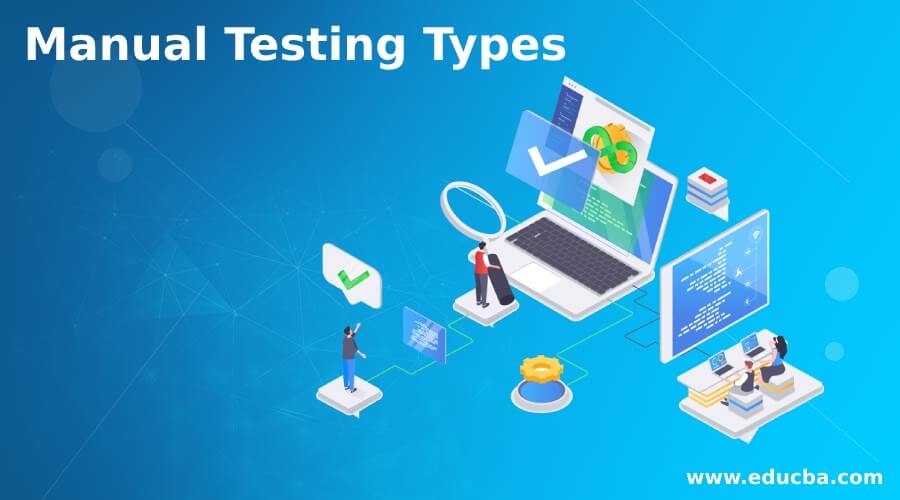Updated April 5, 2023
Introduction to Manual Testing Types
Manual testing is the process of manually testing the software for defects. It requires a tester to play the role of an end-user whereby they use most of the application features to ensure the correct behavior. Tester often follows the written test plan; they lead them through a set of important test cases and guarantees the software’s completeness. In manual testing, the cost of operations is less, as there is no use of testing tools. Most of the bugs are caught by manual testing. Various types of manual testing are black-box testing, white box testing, unit testing, system testing, integration testing and acceptance testing.
List of Manual Testing Types
Below is a list of testing where we can do the manual testing:
1. Black Box Testing
Black box testing is one type of manual testing that examines the software’s functionality without peering into its internal structure and coding. The primary source in this type is the requirements specified by the users. The first tester creates positive test scenarios and adverse test scenarios by considering valid and invalid input to validate whether the software is working properly or not. After that tester creates various test cases such as decision table, cause-effect graph, error estimation, etc. Then tester executes all test cases and compares the outcome results with expected results. Based on the result, the tester decides whether to release the software or needs to rework it.
2. White Box Testing
Another manual testing type is white box testing which is also known for glass box testing. It is used to test the internal coding and infrastructure of the software. It focuses on the checking of the predefined input against expected the desired output. To perform this type of testing, the tester needs to know programming as it focuses on the coding structure. Its main goal is to focus on the inputs and outputs through the software and strengthening the software’s security. Every line of the code is tested. After testing the white box technique, the developer sends the software to the testing team to perform the black box testing and validate the software with specified requirements.
3. Unit Testing
In this manual testing type, the components of the software are tested. The main goal of this testing is to determine whether each component of the software is working properly or not. The developers perform it during the development of the application. It helps to find the bugs early in the development life cycle so that they can be fixed at an early stage and saves time and cost. It helps the developers understand the code base and allows them to make the changes quickly. The manual approach for unit testing involves step by step instructional documents. One of the advantages of adopting unit testing is, we can test the parts of the projects without waiting for others to be completed.
4. Integration Testing
In integration testing, each component of the software are combined together and tested as a group. The main goal of this testing is to determine whether each component is interacting with each other as expected or not. To perform the testing, it uses test drivers and test stubs. Integration testing is performed after the unit testing and before the system testing. The developers or individual testers perform it. It uses four approaches: the big bang approach, top-down approach, bottom-up approach, and hybrid approach.
5. System Testing
System testing is to test the system as a whole. Its main goal is to evaluate the end to end system specification. Unit testing is used to used the fully integrated system to check how each component interacted with each other and with the system. It involves testing of various functions such as load testing, regression testing, usability testing, functional testing, migration testing, recovery testing, hardware testing, software testing, etc.
6. Acceptance Testing
Acceptance testing is performed to test the software for its acceptability. The main goal of this testing is to evaluate the compliance of the system with specified requirements and assess whether it is acceptable for delivery or not. Acceptance testing is performed after the system testing and before making the system available in production for actual use. It is categorized into two types – internal acceptance testing and external acceptance testing. The internal member of the organization performs internal acceptance testing, and external acceptance testing is performed by the external who is not a part of the organization.
Conclusion
Here in this article, we have seen various types of manual testing. Each testing type is important as each has its own importance, and each type is used to test the various parts of the software at different levels.
Recommended Articles
This is a guide to Manual Testing Types. Here we discuss the introduction and list of manual testing types for better understanding. You may also have a look at the following articles to learn more –



